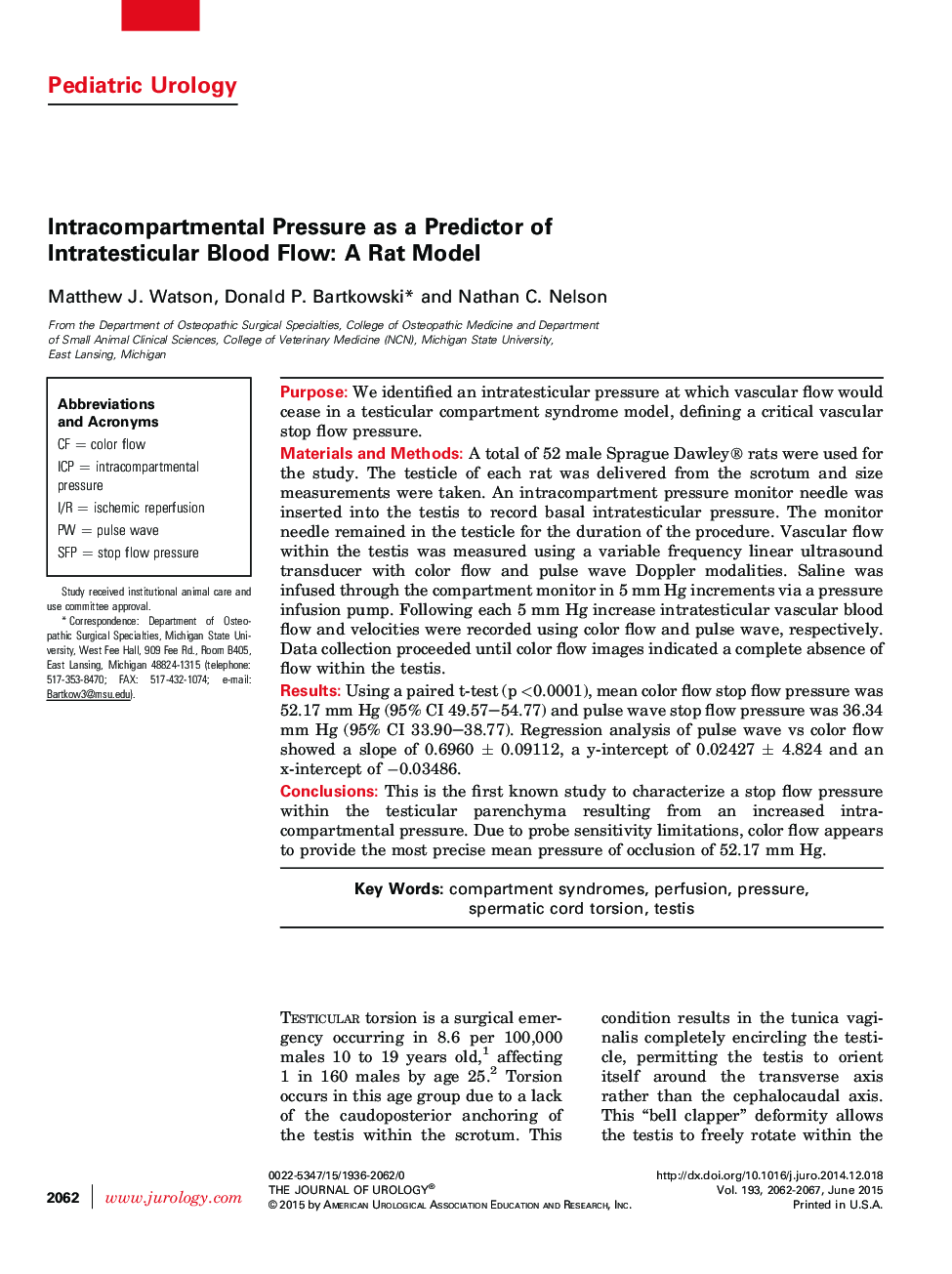| Article ID | Journal | Published Year | Pages | File Type |
|---|---|---|---|---|
| 3858872 | The Journal of Urology | 2015 | 6 Pages |
PurposeWe identified an intratesticular pressure at which vascular flow would cease in a testicular compartment syndrome model, defining a critical vascular stop flow pressure.Materials and MethodsA total of 52 male Sprague Dawley® rats were used for the study. The testicle of each rat was delivered from the scrotum and size measurements were taken. An intracompartment pressure monitor needle was inserted into the testis to record basal intratesticular pressure. The monitor needle remained in the testicle for the duration of the procedure. Vascular flow within the testis was measured using a variable frequency linear ultrasound transducer with color flow and pulse wave Doppler modalities. Saline was infused through the compartment monitor in 5 mm Hg increments via a pressure infusion pump. Following each 5 mm Hg increase intratesticular vascular blood flow and velocities were recorded using color flow and pulse wave, respectively. Data collection proceeded until color flow images indicated a complete absence of flow within the testis.ResultsUsing a paired t-test (p <0.0001), mean color flow stop flow pressure was 52.17 mm Hg (95% CI 49.57–54.77) and pulse wave stop flow pressure was 36.34 mm Hg (95% CI 33.90–38.77). Regression analysis of pulse wave vs color flow showed a slope of 0.6960 ± 0.09112, a y-intercept of 0.02427 ± 4.824 and an x-intercept of −0.03486.ConclusionsThis is the first known study to characterize a stop flow pressure within the testicular parenchyma resulting from an increased intracompartmental pressure. Due to probe sensitivity limitations, color flow appears to provide the most precise mean pressure of occlusion of 52.17 mm Hg.
